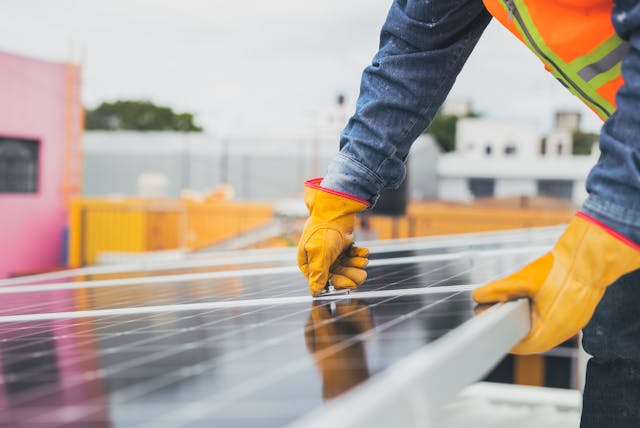With the growing concern over environmental sustainability and increasing energy costs, more Canadian homeowners are turning to solar panels installation as a way to harness renewable energy. Solar power offers a clean, cost-effective solution for reducing electricity bills while minimizing carbon footprints. However, installing solar panels in Canada can be challenging due to its unique climate, varying sunlight exposure, and regional regulations. This guide provides valuable tips for Canadians interested in solar panels installation for their homes.
1. Assess Your Home’s Solar Potential
Before installing solar panels, it’s essential to determine whether your home has enough sunlight exposure to make solar energy worthwhile. Canada’s geography offers a wide range of sunlight availability, with southern regions like Ontario and British Columbia experiencing more sun hours compared to northern areas. Factors to consider include:
- Roof Orientation and Tilt: For optimal solar energy production, your roof should ideally face south with a tilt of around 30 to 45 degrees. However, east- and west-facing roofs can also work, though with slightly less efficiency.
- Shade: Solar panels need unobstructed access to sunlight for most of the day. Check for tall trees, neighboring buildings, or chimneys that could cast shadows on your roof, reducing the system’s efficiency.
- Roof Condition: Solar panels last for 25-30 years, so ensure your roof is in good shape before installation. It’s recommended to replace an aging or damaged roof prior to installation to avoid the hassle of removing and reinstalling the panels later on.

2. Understand Canadian Solar Incentives and Regulations
Each province in Canada has different policies and incentives for solar panel installation. Understanding these can help reduce costs and ensure compliance with local laws. Here are some key programs and considerations:
- Federal and Provincial Rebates: Canada’s federal government offers various programs to encourage solar adoption, such as the Canada Greener Homes Grant, which provides up to $5,000 for eligible home energy improvements, including solar panels. Many provinces, including Ontario, Alberta, and Quebec, also offer rebates or tax incentives for installing solar systems.
- Net Metering Programs: Net metering allows homeowners to feed excess energy produced by their solar panels back into the grid in exchange for credits on their utility bill. This program is available in many provinces and is a great way to maximize savings from your solar installation.
- Building Codes and Permits: Ensure that you’re familiar with your local building codes and that you obtain all necessary permits before installation. This may include electrical permits and municipal approvals for structural changes to your home.
3. Choosing the Right Type of Solar Panels
There are several types of solar panels available, and choosing the right one is essential for efficiency and durability in Canadian climates. The three main types of panels include:
- Monocrystalline Panels: These panels offer the highest efficiency and are ideal for areas with limited space. They work well in colder temperatures, which makes them a good choice for Canadian winters.
- Polycrystalline Panels: While slightly less efficient than monocrystalline panels, polycrystalline panels are a more affordable option. They are durable and work well in sunny regions but may be less efficient during colder months.
- Thin-Film Panels: Although these are the least efficient, they are lightweight and flexible, making them suitable for unconventional installations. However, their low efficiency makes them less practical for areas with limited sunlight.
When selecting panels, consider their efficiency, cost, and how well they perform in both summer and winter conditions.
4. Account for Canadian Winters
Canada’s long, cold winters present specific challenges for solar panel installations. Snow accumulation can block sunlight from reaching the panels, reducing efficiency. To ensure maximum performance during winter months, consider the following tips:
- Proper Tilt Angle: Adjusting the tilt angle of the solar panels to a steeper position can help snow slide off more easily. In some cases, mounting systems with adjustable tilt options allow you to change the angle seasonally.
- Snow Removal: Regularly removing snow from the panels is necessary to maintain efficiency. Use a soft brush or specialized tools designed for solar panel cleaning to prevent damage.
- Winter Performance: While solar panels produce less energy in winter due to shorter days and snow coverage, they actually operate more efficiently in colder temperatures. Panels can perform well as long as they receive sufficient sunlight.
5. Select a Reliable Solar Installer
Choosing a reliable solar installer is crucial to the success of your solar panel system. Look for an installer with experience in the Canadian market who understands local regulations, climate conditions, and best practices. Here are a few tips for finding the right installer:
- Certification and Licensing: Ensure that your installer is certified by a recognized organization, such as the Canadian Solar Industries Association (CanSIA). This guarantees that they meet industry standards and regulations.
- Experience with Canadian Winters: Make sure your installer has experience dealing with Canadian weather conditions. Ask for references or reviews from customers in similar climates to ensure they understand the unique challenges of snow and cold weather.
- Warranties: A good solar installation should come with warranties that cover both the equipment and the installation. Most reputable installers offer warranties for 20-25 years on the solar panels and around 10 years for installation labor.
6. Plan for Long-Term Maintenance
While solar panels are relatively low-maintenance, planning for regular upkeep is important to ensure their longevity and optimal performance. Some maintenance tasks include:
- Cleaning the Panels: Dust, leaves, and snow can accumulate on the panels, reducing their efficiency. Clean them a few times a year using water and a soft brush, but avoid abrasive materials that could damage the surface.
- Monitoring System Performance: Many modern solar systems come with monitoring tools that allow you to track energy production in real-time. Regularly checking the system’s output will help you catch any potential issues early.
- Inverter Maintenance: The inverter, which converts the solar energy into usable electricity, may need replacing after about 10-15 years. Keep an eye on the system’s performance to spot inverter issues early.
7. Consider Battery Storage Options
While net metering allows you to send excess energy back to the grid, battery storage systems provide another option for managing your solar energy. With a solar battery, you can store excess energy produced during the day and use it during the night or during power outages. This is particularly useful in areas where the grid is unreliable or in remote regions of Canada.
Popular battery options include:
- Tesla Powerwall
- LG Chem RESU
- Panasonic EverVolt
Consider the cost, capacity, and lifespan of the battery when deciding if solar storage is right for your home.
8. Be Prepared for Upfront Costs
While solar panels can save money on energy bills over time, the initial installation can be costly. The price of solar panels in Canada varies depending on the size of the system, the type of panels, and any additional equipment like inverters and batteries. However, with incentives, rebates, and long-term savings, solar panels offer a significant return on investment. Typical costs range from $10,000 to $30,000 for residential installations, but financing options are available to make the upfront investment more manageable.
Conclusion
Solar Panels installation in Canadian homes requires careful consideration of climate, sunlight exposure, and local regulations. By assessing your home’s solar potential, choosing the right panels, working with experienced installers, and planning for winter challenges, you can successfully harness solar energy in Canada. The long-term benefits of lower energy bills, reduced carbon emissions, and increased home value make solar power an attractive option for many Canadian homeowners.
Also read: Recent Trends in the West Bay Apartment Rental Market


